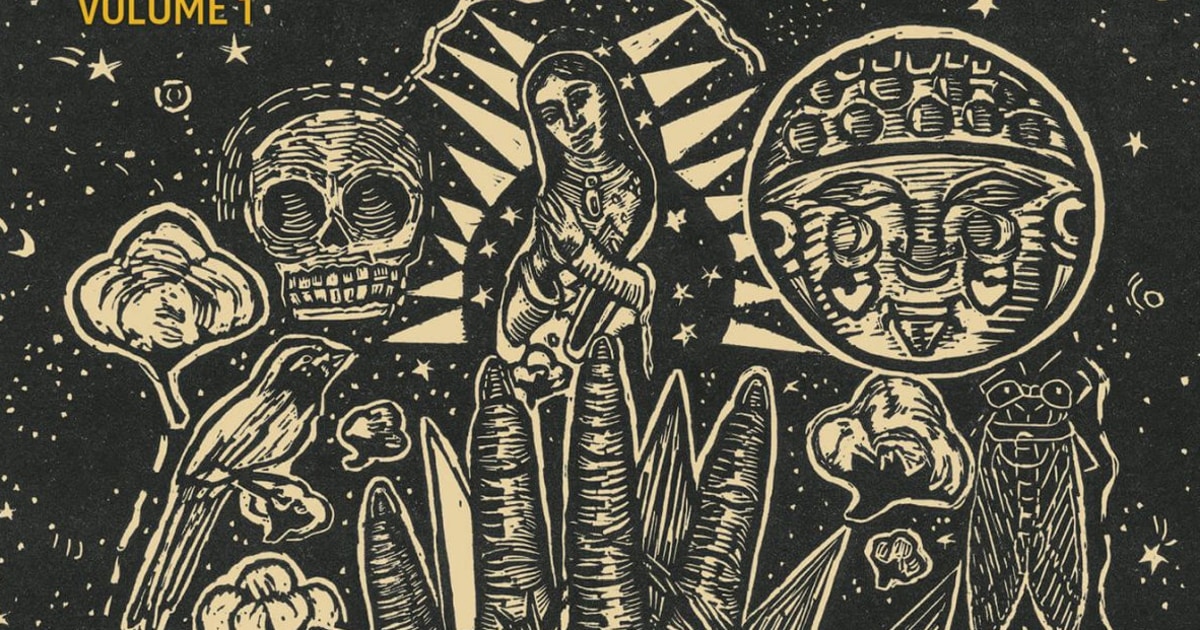📢
Axios Latino is the newsletter that summarizes the key news for Latino communities in the hemisphere every Tuesday and Thursday.
You can subscribe by clicking
here
.
1. The theme to highlight: '
Chekspir' for everyone
There is a global movement to bring more and more diversity to the work of William Shakespeare, most recently with an award-winning project that wants to set his best-known works on the US-Mexico border.
to tell the classic plots with Latin and indigenous perspectives.
Big picture:
For centuries Shakespeare's work has had performances with predominantly white, male Anglo leads.
Although his work has been increasingly adapted and modernized, for example in films like
10 Things I Hate About You
, the leads haven't been that much more diverse until recently.
Academics and directors are now putting new twists on the works, with all-female casts or more experimental adaptations of the bard's best-known works.
"When you offer them Shakespeare with this frontier or multilingual perspective... these ancient works take on a new life"
Adrianna m.
saints texas a&m university
More details
: In February three academics working in Texas received a $500,000 grant from the Mellon Foundation to strengthen their project called Shakespeare in the US-Mexico Borderlands.
They are Kathryn Vomero Santos, from Trinity University, and Katherine Gillen and Adrianna M. Santos from Texas A&M University in San Antonio.
The group wants to make Shakespeare more accessible to all border communities and with its "Borderlands Shakespeare Collective" reframe how it is taught and performed.
His book
The Bard in the Borderlands: An Anthology of Shakespeare Appropriations on the Border,
which goes on sale in March, contains 12 adaptations of the plays with a borderland tone.
For example, the one about
Romeo and Juliet
is called "The Language of Flowers", it has touches of Day of the Dead and it is imagined that the young lovers, dying together, end up in a Mexica underworld.
Beyond
: In London, the Globe Theater has increased the amount of productions that experiment with their casts, having for example black Britons or those of South Asian descent as protagonists.
The Globe, rebuilt on top of the same theater where Shakespeare staged his plays in his lifetime, also hosts an online class series called Anti-Racist Shakespeare, where it invites diverse scholars and artists to examine the bard's works with a focus on gender or ethnicity/ race.
In the United States there have also been more diverse recent productions, such as a bilingual audio adaptation of
Romeo and Juliet
, released in 2021 with Kenyan-Mexican-American actress Lupita Nyong'o.
In Delaware there was also an all-Latino production last year of
Twelfth Night/Twelfth Night.
Kathryn Vomero Santos, Katherine Gillen and Adrianna M. SantosPhotos courtesy of Borderlands Shakespeare Collective
In her own words
: "We think our work aligns well with this more general movement that some are calling #ShakesRace," or the analysis of racial themes in Shakespeare, Trinity scholar Kathryn Romero tells Axios Latino.
While Texas A&M's Adrianna Santos says these adaptations and adaptations are especially important for the great playwright to remain appealing to young students today who, in Santos' experience, often don't connect as much with the material as it originally exists.
"When you offer them Shakespeare with this cross-border or multilingual perspective...that speaks to Mexican-American contexts or Latino history and culture, these age-old works take on new life for them," Santos says.
2. A slight decline for veterans
Times for specialist physician care for black and Hispanic military veterans in the United States worsened during the pandemic, according to a new analysis that found non-Hispanic white veterans did not experience the same setbacks.
Why it matters
: 12% of veterans are black and 8% are currently Latino.
The Department of Veterans Affairs (VA) estimates that the numbers will increase to 15% and 12%, respectively, by 2045.
Disparities in access to treatment for these members of the military can have serious mental health consequences or even complicate how they adjust to civilian life.
The Boston Department of Veterans Affairs hospital in January 2022Joseph Prezioso/AFP via Getty Images
More Details
: The analysis looked at appointment wait times for more than a million veterans seeking cardiology or orthopedic consultations, two of the VA's most sought-after specialty services.
The researchers found that wait times for Hispanic veterans increased by five days for cardiology and four days for orthopedics between fiscal years 2019 and 2021, compared to wait times for appointments requested by non-Hispanic whites.
The research was published in late January in the Journal of the American Medical Association (JAMA).
In his own words
: "It may be that white veterans have more information or resources over a longer period of time on how to reduce the wait and that's not necessarily the case for black and Latino veterans," says Raul Danny Vargas, founder and
CEO
of the American Latino Veterans Association.
"In summary, Latino veterans continue to be an important and significant part of the general veteran population, but there are still nuances and differences in the approaches that exist for them," he adds.
A 2018 law called the MISSION Act
enacted adjustments to how VA health services operate.
For example, the law makes it easier for veterans and their families to get medical care from approved community providers instead of going directly to VA offices for some types of treatment.
JAMA's analysis stressed that this program only began operating nationwide in mid-2020, so it remains to be seen if the "post-MISSION period" results in wait times worsening in the pandemic being able to level out.
"We are making progress in reducing wait times," VA Secretary Denis McDonough said last September during a Senate hearing.
A VA spokesman, Randall Noller, added to Axios Latino that "any disparity in care is unacceptable and we will not rest until all veterans who come to VA receive the world-class medical care that all racial and ethnic groups deserve."
3. Samba comes back to life
After two years of a relatively subdued Carnival in Rio due to the pandemic, the festivities kicked off with a bang this year.
The events, both organized in stadiums and spontaneous in the streets, with the so-called
blocos,
began last Friday and will continue until Saturday, when the most awarded samba schools parade in the Rio de Janeiro Sambadrome.
We bring you a look at some postcards of the festivities:
Mauro Pimentel/AFP via Getty Images
Mauro Pimentel/AFP via Getty Images
A dancer from the Estaçao Primeira de Mangueira school parades on February 20 at the Sambódromo.
A line of drums marches on February 20.
4. A (not so) balanced diet
Nearly 54% of Hispanic children in the US are not eating vegetables daily and more than a third are not eating fruit, according to new data from the Centers for Disease Control and Prevention (CDC, for its acronym in English). ).
Big Picture
: Hispanic children ages 1 to 5 were most likely not to consume a single vegetable or fruit in 2021, according to the National Survey of Children's Health.
Illustration: Shoshana Gordon/Axios
Why it matters:
The data provides insights into what is needed to make diets so important for promoting development and growth more quality when pandemic food benefits and subsidies (such as school meal vouchers) are up. expire.
There are also growing concerns that chronic diseases resulting from diet, such as diabetes or obesity, affect black and Latino youth more.
5. Summary of key news in Latin America and the Caribbean
1.
Brazilian President Luiz Inácio Lula da Silva
promised a quick reconstruction but safer homes on Monday during a visit to the parts of the state of São Paulo most affected by heavy rains that in recent days left at least 44 dead.
More than 2,000 people have been temporarily displaced from their homes due to flooding.
Lula de Silva visits the area affected by the floods in São Paulo
Feb 20, 202300:25
2.
Colombian activist Leyner Palacios,
a survivor of the 2002 Bojayá massacre, said Monday that he and his family have had to flee because they face new death threats.
Palacios was also one of 11 members of the Truth Commission that last year published a comprehensive report on the victims and perpetrators of the five-decade guerrilla conflict, a report that also suggested reforms to the armed forces and other programs.
Palacios told Caracol radio that he believes the threats come from people who are uncomfortable with the commission's report.
6. A modern and ancient eye on bubblegum
We take you inside one of the largest factories in Mexico City, dedicated to producing chewing gum, making more than 280 tons each month.
More details:
The Bubli Bubli company is known for its round chewing gums in flavors like lemonade and banana.
Highlights
: We owe chewing gum to the Mayans and the Aztecs, who extracted a resin from the sapodilla tree thousands of years ago.
Do you know how chewing gum is made?
This is how they do it in the most famous factory in Mexico
Feb 3, 202302:02
The Mayans call it
cha'ach,
which means chewable or chewable, and they used it primarily to feel less hungry when they didn't have easy access to food.
The Aztecs, meanwhile, called it
tzictli
, a Nahuatl word that means sticky, and they used it above all to improve their breath.
Tzictli, with the arrival of the Spanish colonizers, became the word chicle.
The product first made its way to the United States, reportedly in the 1860s when scientist Thomas Adams Sr. added sugars to the resin and began selling it en masse.
Thanks for reading us!
We return on Thursday.
Do you want to read any of the previous editions?
"They knew how to adapt": how Latino businesses are better than before the pandemic
Why a district in Florida tried to 'cancel' a book about baseball player Roberto Clemente
Where are the bilingual teachers?
The Hispanic voice is scarce in US schools.
'Brown-eyed soul': this is how Hispanics reap success in R&B music


/cloudfront-eu-central-1.images.arcpublishing.com/prisa/INU3EC6I6VF6NEMPKWATA22NNA.jpg)
/cloudfront-eu-central-1.images.arcpublishing.com/prisa/6LR4RYAGZZBYTPDW3Y4WG67SQI.jpg)



/cloudfront-eu-central-1.images.arcpublishing.com/prisa/OOBF5MCTLJGB5J5O4SKHMULMK4.jpg)
/cloudfront-eu-central-1.images.arcpublishing.com/prisa/MW6LQDYDA5HZBBGASEP3XSI4CM.jpg)
